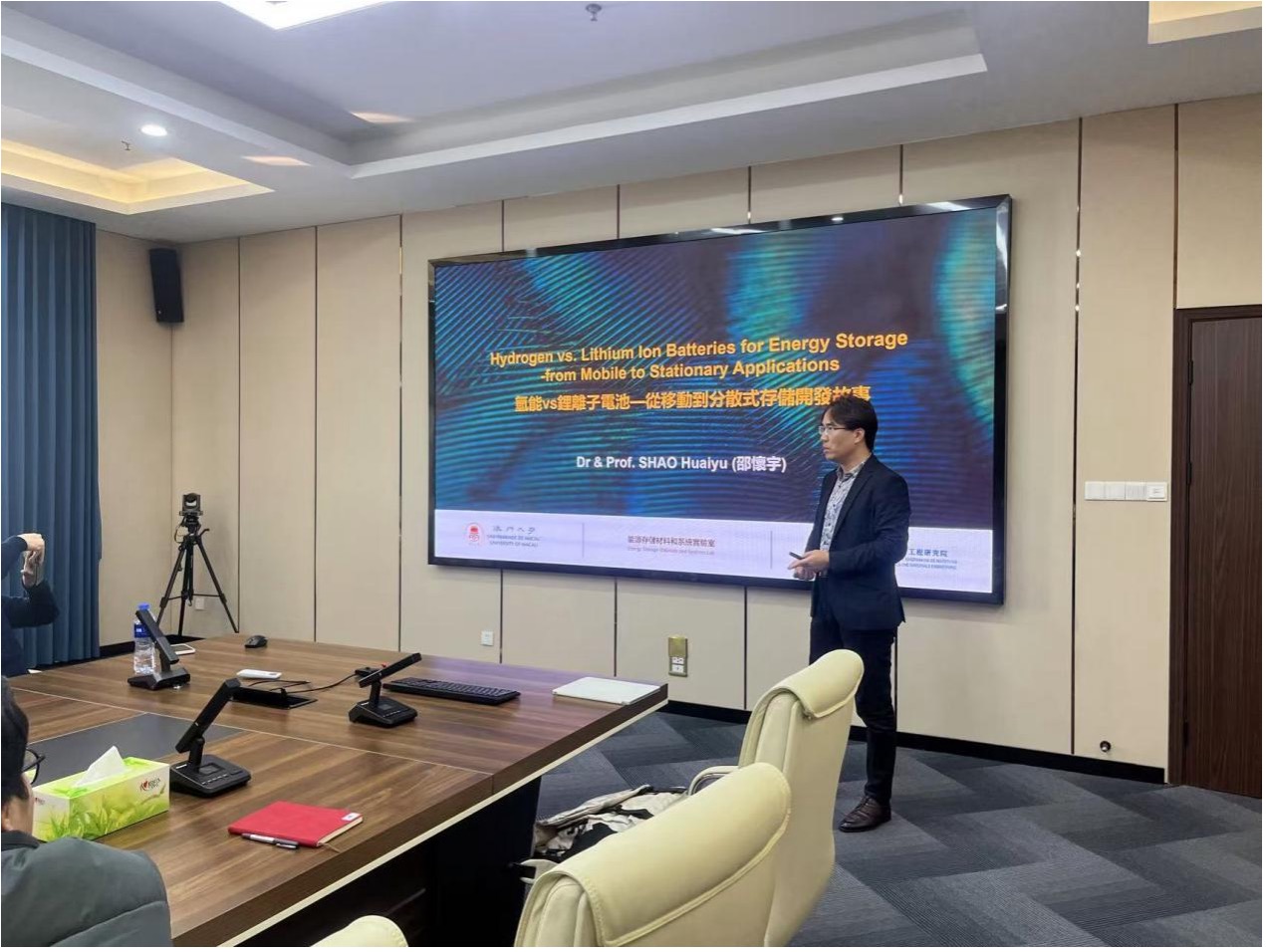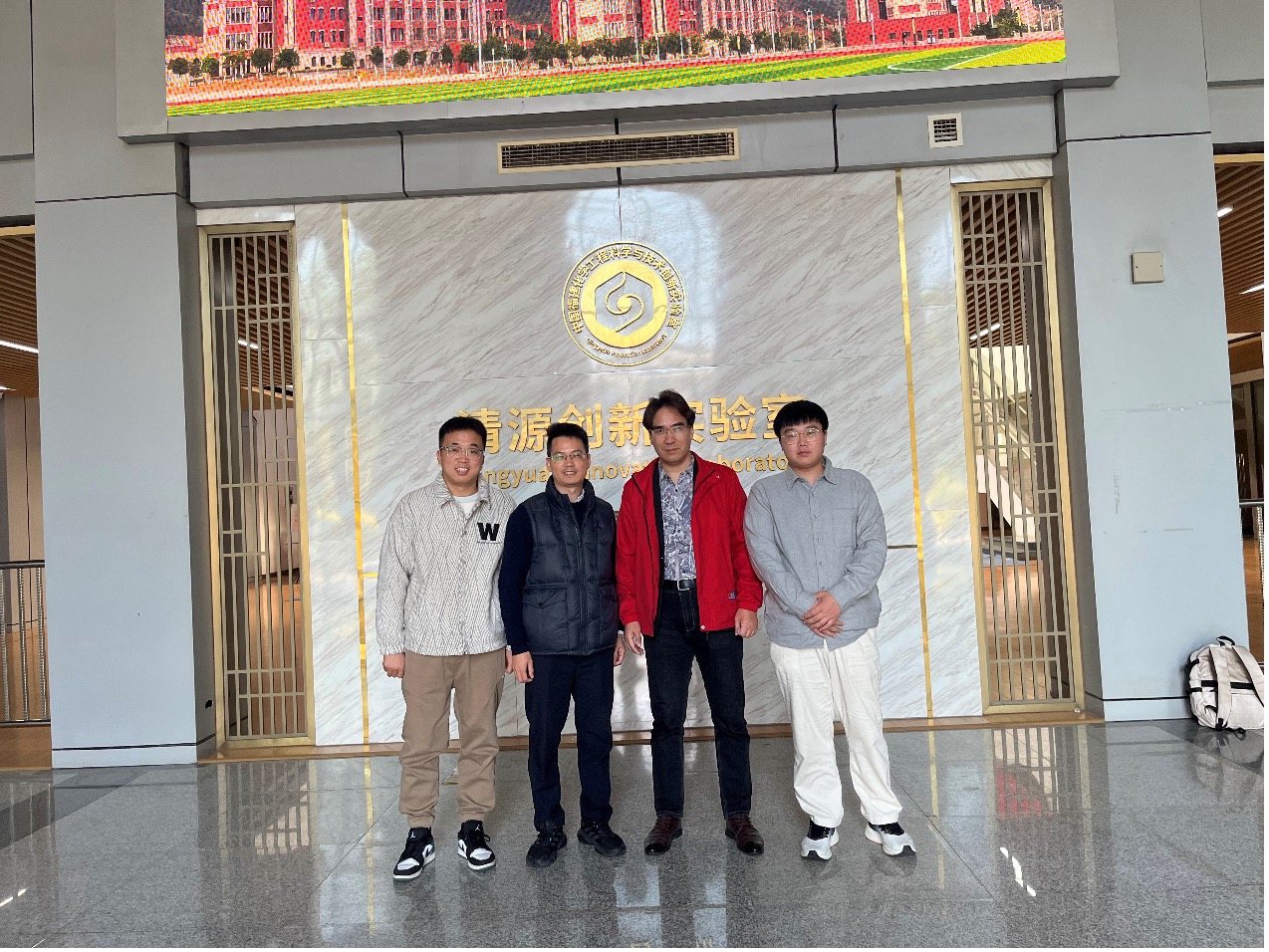On December 30, 2024, Professor Shao Huaiyu from the University of Macau was invited by Professor Yuxin Tang from Fuzhou University and Qingyuan Innovation Laboratory to visit the research group for exchanges. He also delivered an excellent academic report titled "Hydrogen Energy vs. Lithium-ion Batteries - The Development Story from Mobile to Distributed Storage" in the conference room 327 of the library at Qingyuan Innovation Laboratory.
In the current booming development of the hydrogen energy industry, the hydrogen storage and transportation link has become the key to the wide application of hydrogen energy. Hydrogen, as an efficient and clean energy carrier, the choice and optimization of its storage and transportation methods are crucial for ensuring the stable supply of hydrogen energy, reducing costs, and ensuring safety. Currently, common hydrogen storage and transportation methods include compressed hydrogen storage and transportation, liquid hydrogen storage and transportation, and solid-state hydrogen storage. Solid-state hydrogen storage is an emerging technology that has attracted much attention in recent years. By combining hydrogen with metal or chemical materials to form a stable solid hydride for storage, and when hydrogen is needed, it is released under appropriate conditions. A series of research work has been carried out in the field of solid-state hydrogen storage. In order to study the hydrogen storage performance of magnesium-based materials, especially to improve their kinetic, thermodynamic, and thermal conductivity properties. The kinetic behavior can be greatly improved through nano-structured (size reduction) and catalysis. However, for the thermodynamics of magnesium-based materials, in the process of studying the thermodynamics (desorption enthalpy and entropy change), it was found that there is no significant direct change in the size range of 5 - 300 nm. This means that the goal of using magnesium-based materials for on-board hydrogen storage is difficult to achieve because it is almost impossible to desorb hydrogen at about 1 atmosphere of hydrogen below 100 °C. However, magnesium-based materials have great potential in high-temperature energy storage, especially in scenarios where thermodynamic reduction is not required, including hydrogen-thermal coupling systems combined with high-temperature oxide fuel cells.

Lecture scene
In this report, Professor Shao Huaiyu summarized the development and research progress of magnesium-based solid-state hydrogen storage technology in the hydrogen energy field and silicon-based anode materials in the lithium-ion battery field, discussed and compared the possible application scenarios and potentials of these two energy storage technologies, and presented some considerations on the development of materials and systems for the hydrogen-thermal coupling concept, as well as the simulation and verification research on the thermal balance between the hydrogen storage and thermal conductivity properties of materials and the fuel cell and magnesium-based energy storage system. It aroused a heated discussion among the participating teachers and students and inspired their desire for exploration. The participants actively participated in the discussion session and had in-depth exchanges with Professor Shao Huaiyu on research in related fields. The collision of knowledge and the inspiration of ideas continued, further promoting academic cooperation and the development of disciplines.
This exchange activity provided a valuable academic exchange platform for the teachers and students of Qingyuan Innovation Laboratory and Fuzhou University. It injected new vitality into scientific research work, expanded the boundaries of vision, and promoted scientific research innovation and work practice to a new height.

Group photo
